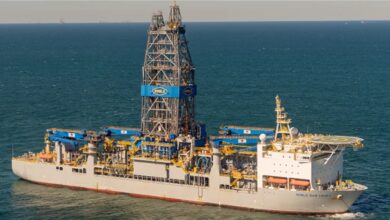ESG, geothermal likely to be impetus for next innovations in drilling

By Stephen Whitfield, Associate Editor
The oil and gas industry is in the midst of a digital transformation, developing complex systems that will enable innovation in new frontiers. In his keynote address at the 2021 IADC Advanced Rig Technology Conference on 20 October, Lei Wang, Senior Principal Engineer – Data Science at Parker Wellbore, argued that ESG will be one of the next frontiers to drive innovation. It won’t be simply innovation from an emissions perspective. The social and governance aspects of ESG will also propel companies to build a multiskilled workforce. They will need to actively give their employees new competencies to excel in a more dynamic environment.
“The digital transformation is really a prerequisite for ESG, because there is a lot of strong demand for data sharing across not just different companies but also different industries,” Mr Wang said. “It really affects access to capital investment, not just public investment but also private capital. ESG is a top-down, holistic driving force.”
The industry is already focusing on the environmental aspect of ESG, particularly the reduction of Scope 1 emissions, or direct emissions from operations. Mr Wang noted opportunities for data analytic systems to help companies with process automation and supply chain optimization. Those efforts could also help to reduce Scope 2 (indirect emissions from operations) and Scope 3 (indirect emissions from third-party use of assets that affect a company’s value chain).
With social and governance, Mr Wang said multiskilling would be a “good starting point.” As the digital transformation progresses within the industry, employees will need new skills to handle more automated but more complex systems. To help them with this “upskilling,” organizations may look to develop training programs that identify similarities between different jobs and tasks on a rig site.
Multiskilling can also help organizations to develop a flexible culture, which will be needed to handle future uncertainty. “We’re in a dynamic market where we’re seeing rig counts go up and down. Automation is going to reduce the workforce eventually, and the energy transition will trigger a career transition. The industry is in a reactive mode, rather than a proactive mode, and the question is can we push to upskilling our workforce to get more prepared?”
Digital tools like virtual reality and augmented reality can be useful in upskilling efforts, including training rig crews on new jobs. Companies can also utilize data analytic systems to track and assess individual performance, providing a comprehensive assessment of a worker’s skill development.
Geothermal development is another area where innovation could have a significant impact in the near future. The skills and equipment needed for drilling conventional oil and gas wells are mostly transferable to geothermal. As a renewable energy, geothermal could providing an exciting future for drilling contractors, he said.
However, since geothermal energy cannot be transported along long distances, current geothermal well construction only works in areas with extremely high geothermal gradients, there are still very few areas where it can be produced. To fully explore this frontier, the world will need to find ways to eliminate current limitations.
“Geothermal is a very tricky condition,” Mr Wang said. “You have to satisfy the heat, the fluid and the permeability within your reservoir, otherwise you cannot extract anything. If you look at all of the geothermal resources globally, we can extract probably less than 5%. So, the question is whether we take geothermal from somewhere to anywhere.”
Mr Wang pointed to advanced geothermal technologies under development by various organizations that aim make “geothermal anywhere” easier to accomplish: enhanced geothermal systems and closed-loop geothermal systems.
Enhanced geothermal systems are man-made reservoirs created in areas with sufficient heat but little natural permeability or fluid saturation. Fluid is injected into the subsurface under carefully controlled conditions, causing pre-existing fractures to reopen and allowing fluid to circulate and transport heat to the surface. A closed-loop geothermal system continuously circulates a heat transfer solution through pipes buried within a formation. The pipes are connected to a heat pump to provide sufficient heat, allowing the solution to be used repeatedly in a closed loop.




